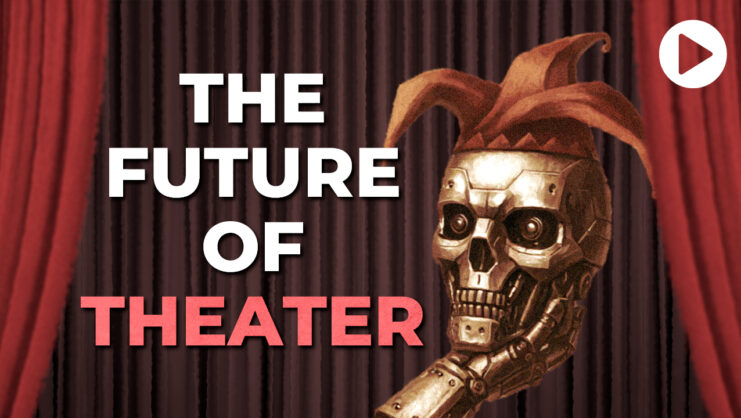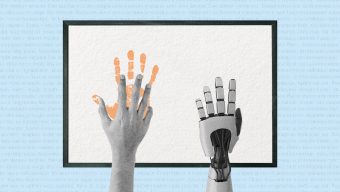Thanks to emerging technologies, a significant paradigm is gaining traction in business practices and the workplace at large: “collaborative intelligence.” The concept emphasizes the synergy between the precision of intelligent computer systems, particularly artificial intelligence (AI), and human ingenuity and inventiveness in order to accomplish tasks that neither could complete on their own. Of course, collaborative intelligence is not a new idea. In fact, its origins go back to the 1959 work of artificial intelligence pioneer Oliver Selfridge, whose “Pandemonium: A Paradigm for Learning” laid the ground for the blackboard architecture system, which allows for knowledge sharing and teamwork. But it is currently on a rapid rise, one that is changing the way we work.
Studies have indicated that enhanced performance occurs when intelligent machines and people collaborate, drawing on what each is best at: people bring creativity, teamwork, and social skills, while AI brings speed, the ability to handle lots of data, and number crunching. Within the past year, this collaboration has continued to evolve, as Accenture’s Paul Daugherty and H. James Wilson point out in their book Radically Human (a follow-up to their book, Human + Machine). Furthermore, diverse groups of people create better solutions than homogenous groups. For example, according to McKinsey research, businesses with more diverse teams had a 35% higher chance of generating financial returns above industry medians. To put it simply, combining different experiences and points of view creates a larger pool of potential solutions, which improves group performance.
Considering that, as James Surowiecki detailed in his bestseller, the wisdom of crowds is more beneficial than individual genius when it comes to problem-solving, it only makes sense that, human interaction, conflict, argument, and debate should now come in tandem with the technological shifts if we want to generate true innovation. This is where collaborative intelligence shines; it is the art of orchestrating humans and AI to create solutions that neither could achieve alone.
To make the most of collaborative intelligence, companies can follow these five basic rules:
- Rethink how things get done. For example, AI can make supply chains more accurate and efficient. AI automation can also help companies streamline the routine tasks of employees, allowing them to focus on more strategic work within the organization.
- Create a culture in which employees are encouraged to try out AI as a possible solution to existing problems – without fear of the repercussions of failure. For example, a company with online sales might use AI as a recommendation engine to suggest products, making customers happier and boosting sales. Or, a bank could enhance customer service with customized chatbots, particularly for routine customer questions.
- Develop a plan for using AI. An organization seeking to optimize its customer service procedures may devise an AI strategy that deploys a chatbot that tackles the more common questions. This will free up human agents to work on more difficult problems, improving resource allocation at the same time as enhancing customer service.
- Be mindful about how data is collected and handled. For example, in the healthcare sector, stringent data protocols are crucial to ensure patient privacy and regulation compliance. Similarly, in the financial industry, data must be handled with care to protect sensitive customer and company information, and prevent fraud.
- Consider new ways of working. Companies might need to change how departments work with one another and how employees interact with customers. The integration of real-time data through AI could, for example, help a delivery company optimize supply chain operations, determine the best routes to take in order to save money on fuel, minimize environmental impact, and deliver packages faster.
Simply put, collaborative intelligence is good for business. Teamwork between humans and technology helps both employees and businesses in that it makes things happen more quickly, like financial analysts using AI look at finance reports quickly and make better and more accurate decisions.
It also sparks creativity by helping employees find connections between different ideas. For example, by mixing human ideas with AI data, companies can solve tough problems and move industries forward. In fact, among the strategic benefits of incorporating AI into company planning is how it enables the linkage of disparate ideas, as Tojin T. Eapen and coauthors detail in a recent Harvard Business Review article. Businesses may overcome challenging situations and advance whole sectors by combining human creativity with the extensive data insights offered by AI, and thanks to improved problem-solving skills, this cooperative synergy fosters an inventive attitude throughout the organization.
Furthermore, when businesses use both human and AI smarts, they can predict what customers like and offer personalized experiences. And this keeps the customers coming back. According to McKinsey, “AI-enabled customer service is now the quickest and most effective route for institutions to deliver personalized, proactive experiences that drive customer engagement. ”To use this kind of teamwork, companies should identify tasks that require both creative thinking and data skills. Talking openly across departments about how AI works and what it specifically does for the company is also key to success.
There are many potential benefits to human-AI collaboration. But there are also difficulties that must be resolved – for example, due to possible algorithm flaw, it is essential that companies ensure AI dependability as much as possible and create a reliable collaborative environment by balancing AI capabilities with human oversight. Companies can also provide upskilling opportunities to better equip their workforce with those skills that complement AI technology (and this will also help allay fears of job loss.) Furthermore, a strong cybersecurity defense is required and ethical procedures must be established for the handling of data, so as to avert breaches that can jeopardize worker and customer privacy as well as company intelligence.
Most importantly, the diversity of thought, effective communication, trust, and shared objectives are the cornerstones upon which thriving and resilient organizations are built. By recognizing the significance of collaborative intelligence, companies can drive shared goals and organizational success in a way that neither human nor computer could do alone. Matched well, humans plus AI will create a new workplace and a realm of innovation that we have yet to even imagine.
© IE Insights.











